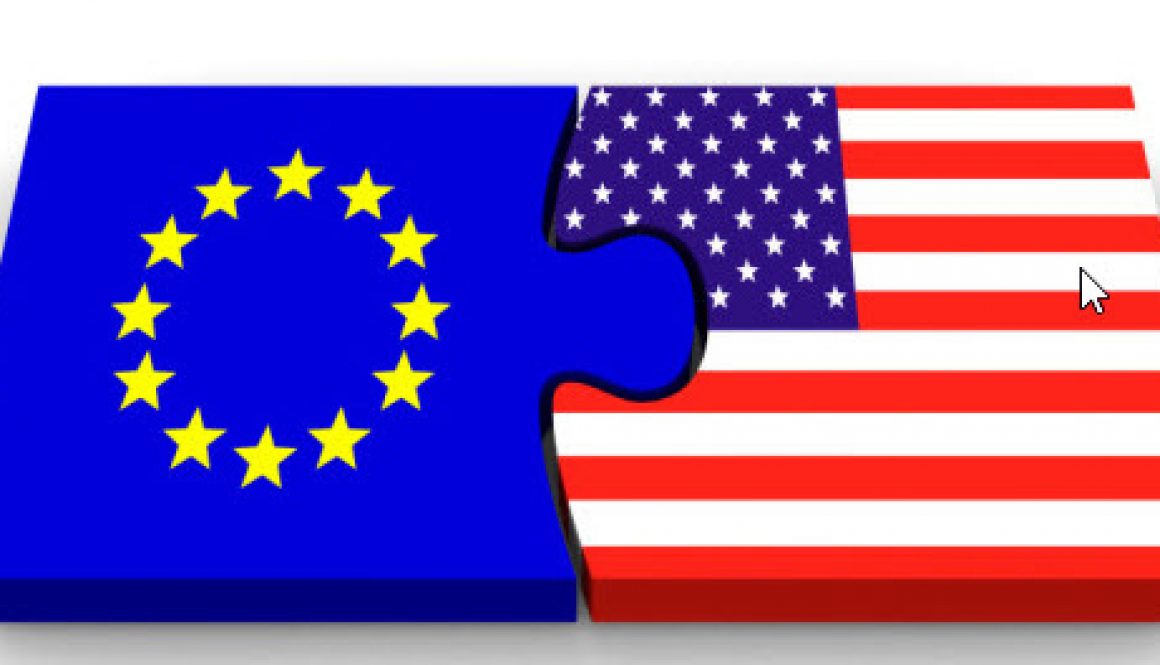US-EU Free Trade
US-EU Free Trade may soon improve with a deal currently under negotiation (TTIP). Some are concerned US trade with NAFTA partners might suffer under a new presidential administration – some going so far as to theorize that NAFTA will be abandoned and tariffs with Mexico raised to 35%. However, it is worth noting that US trade deals with partners in Europe mirror the terms found in NAFTA and will most likely continue to reflect US trade policy with Mexico and Canada.
Current US-EU Free Trade
The European Union and the United States currently enjoy preferential trade with one another. In fact, tariff rates between the two economies are typically less than 3%. Throughout the value chain, the two economies rely upon and integrate with one another. Some of the chief indicators of this current trade relationship include:
- Current US investment in the EU totaling three times US investment in Asia
- Current EU investment in the US totaling eight times EU investment in China and India combined
- Current world trade flows coming from US-EU free trade totaling nearly a third globally
Examining the TTIP
Currently under consideration is a deal to promote trade between the United States and European Union by further reducing tariffs and import/export restrictions. The deal is called the Transatlantic Trade and Investment Partnership (TTIP), and resembles the North American Free Trade Agreement (NAFTA) – the 1994 trade deal the US entered into with Canada and Mexico. Under TTIP, goods exchanged between the US and the EU would enjoy virtually 0% tariffs, and trade restrictions and regulations would be minimized or eliminated. According to the European Commission’s estimates, the TTIP would produce the following benefits:
- Approximately €120 billion for the EU
- Approximately €90 billion for the US
- Approximately €100 billion more for the overall world economy
NAFTA Partners Should Expect Similar Treatment
US-EU free trade is indicative of standard policy for US free trade agreements. The same kind of terms found in the TTIP can also be found in the North American Free Trade Agreement (NAFTA) with Canada and Mexico. In spite of the speculation about a new US administration abandoning NAFTA and the possibility of a 35% tariff on Mexican goods, the likelihood is this policy of fair treatment for trade partners will continue. There are many parallels between the trade agreements the US has in place with its partners abroad, and sparking a trade war with Mexico with a 35% tariff while simultaneously offering 0% tariffs to the EU and other partners seems unlikely. As with the EU, the US enjoys a highly integrated economic relationship with Mexico. And the US-EU free trade agreement should lead US trading partners on this and other continents to expect similar terms.




